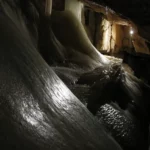Last Updated on 07/10/2023
Vallorbe caves are very large, varied and most impressive of all caves I’ve seen. There are no such bizarre figures as in Harz. But there is an underground river, huge halls and curtains of thin, thin icicles.
Around Lake Neuchâtel – what to see: Neuchatel, Biel, Murten
South of Lake Neuchâtel map
Neuchatel Lake. 1. Estavayer
Canton Valais. Sion – castles and bisse canals
Switzerland by car
Bern – fontains, cathedral and clock tower
Vallorbe is located in the canton of Vaud, on the very border with France. The high-speed road here ends in a circle. If you go to the right, you will immediately enter France. If you go to the left, you will go down to Vallorbe. You can get here from Lake Geneva or Lake Neuchâtel. The main attraction of this small town is the stalactite caves (https://grottesdevallorbe.ch/).
How to get to Vallorbe caves
The cave is located approximately two kilometers from the town itself. From the parking you need to go up (not very steep) for another ten minutes.
By public transport, Vallorbe is easily accessible by train. And at the same time you can see the city’s historic train station. Vallorbe was the northernmost point of the famous railway line to Italy via the Simplon Tunnel. There is also a bus from Yverdon. Then walk along the river to the caves.
Grottes de Vallorbe, Le Tresor des Fees
We go to the cave from the parking lot.
Rocks shine through the trees – this is a vertical rocky wall in which the entrance to the cave is located.


A booklet describing the halls is given along with the ticket.
The route is not the easiest (there are a lot of stairs) and long (about an hour). The path is often slippery, as water is constantly oozing, so you need to think about shoes and the members of the “expedition” (I would not take small children up to four, only in a sling).
It’s cool inside, you need a jacket.
Most of the water of Lake Lac de Joux, located relatively close to Vallorbe, goes into karst cavities and comes to the surface a couple of kilometers from the city. The connection between the lake and the river was confirmed back in the 19th century. But it was not possible to dive in and see what was inside until the 70s of the last century, when dry galleries and caves inside the mountain were discovered. The city decided to spend money on the improvement of this attraction: a tunnel and a trail were made. Even later, the “Great Hall” was opened.
Through the cave
You can tour the cave without a guide. To get more backlighting you should press the buttons.
At first, rather typical rooms with “waterfalls” and “curtains”. Small lakes are sometimes found.
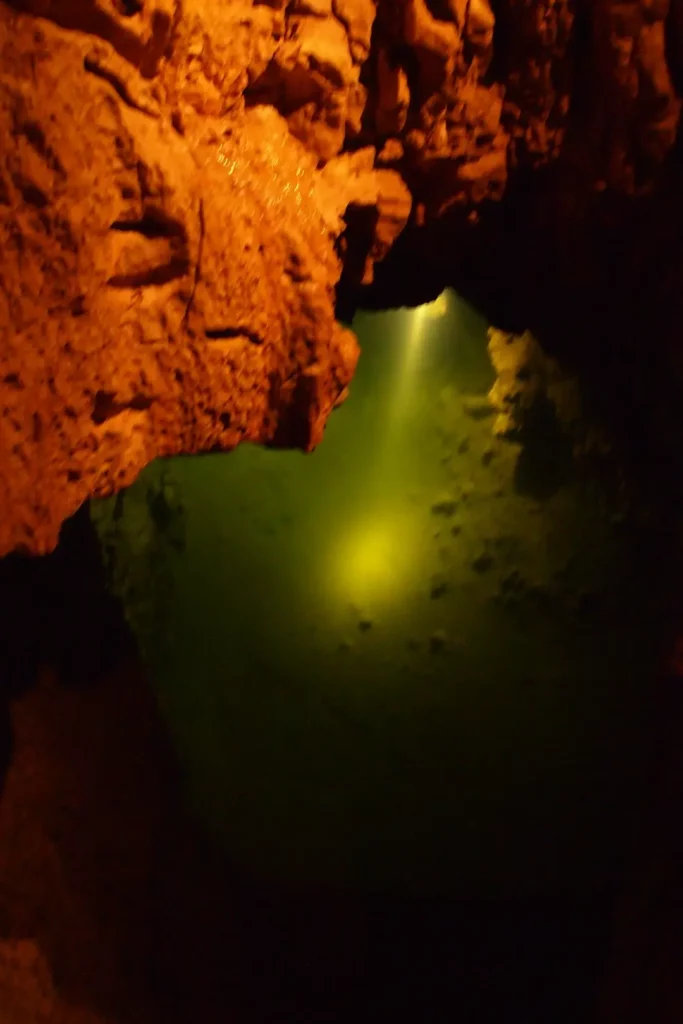

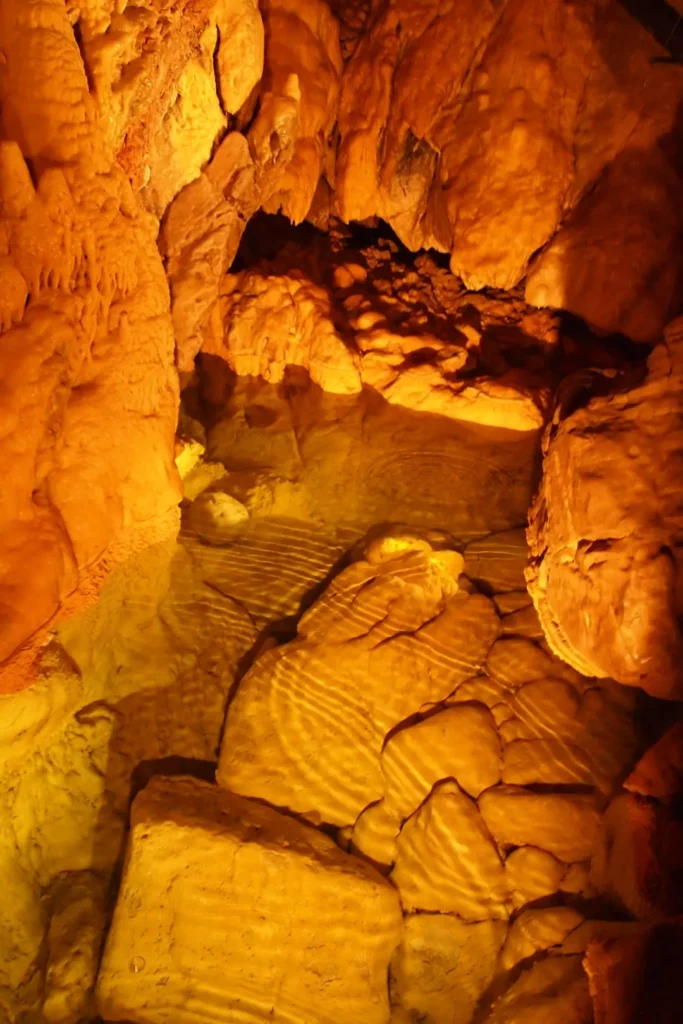
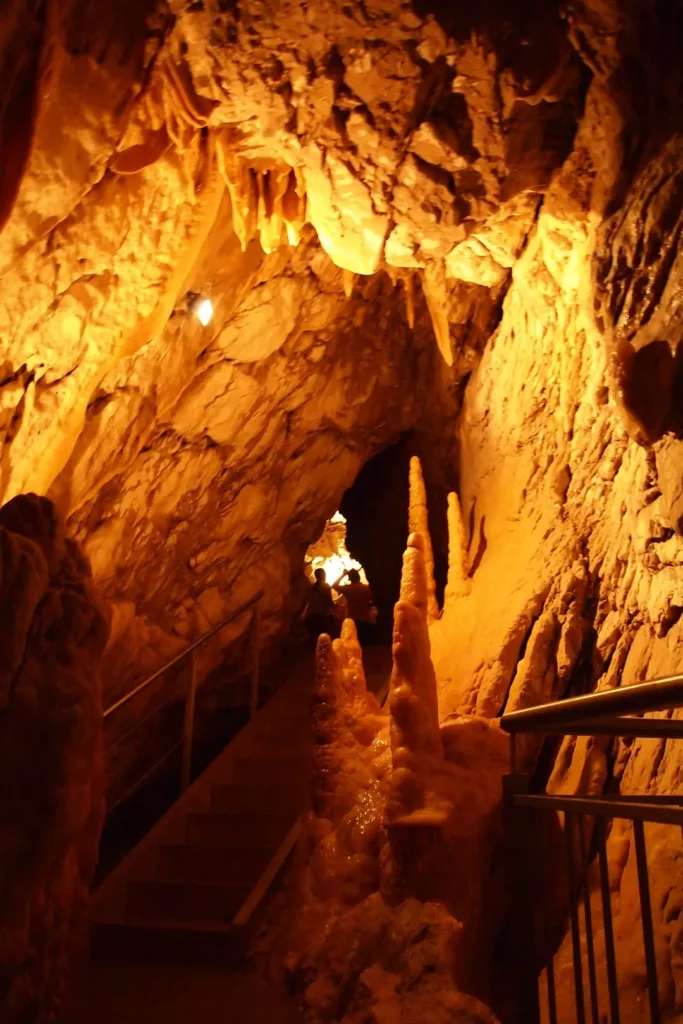
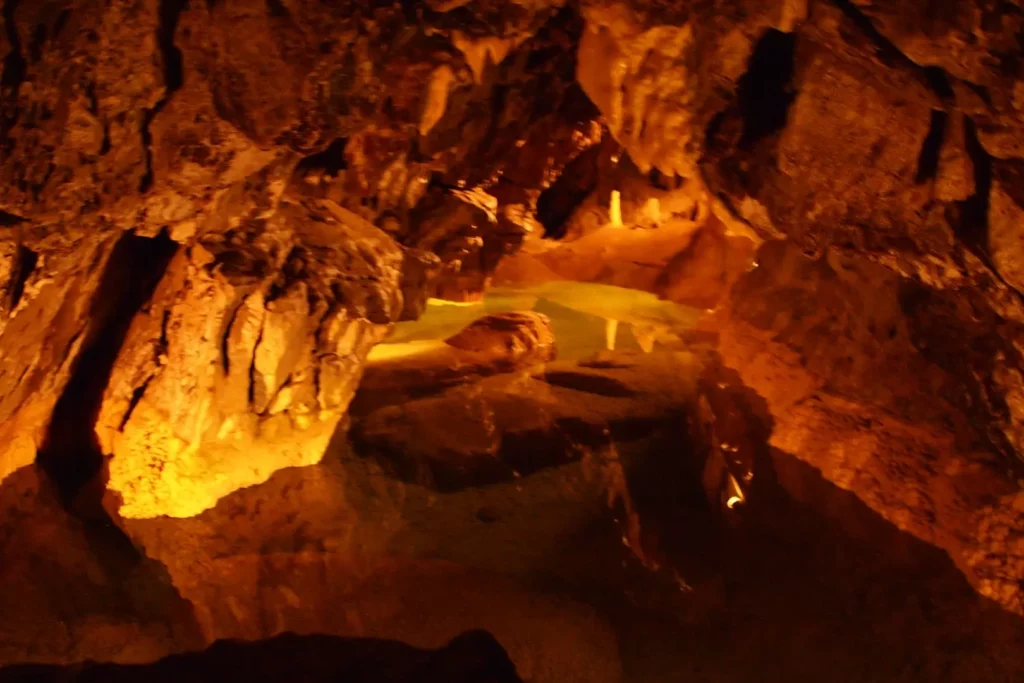
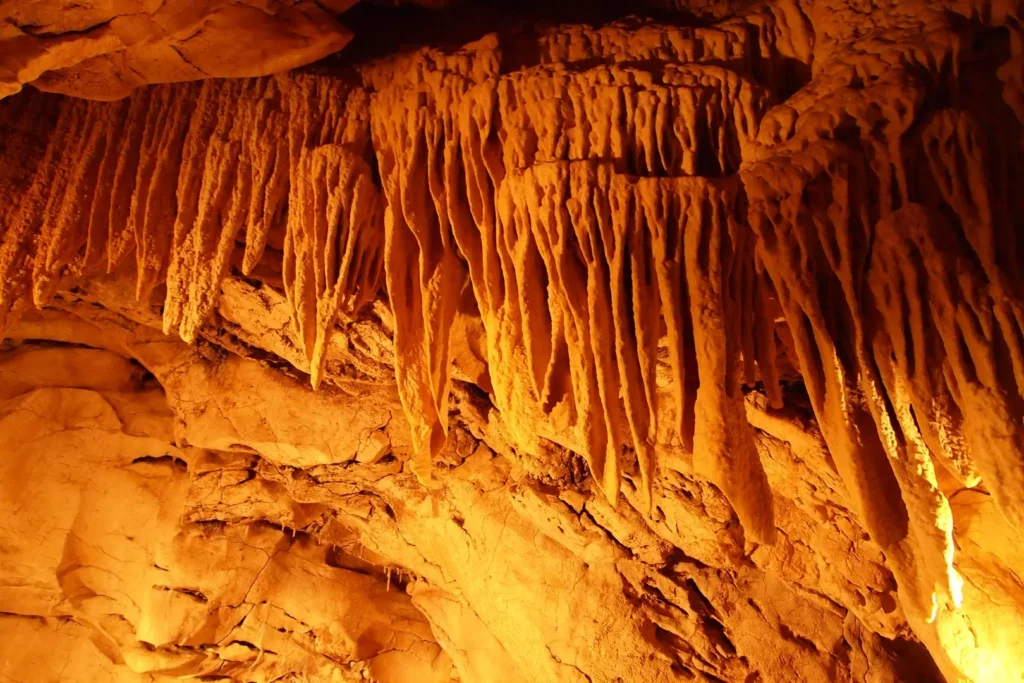


I especially liked the stone threads.
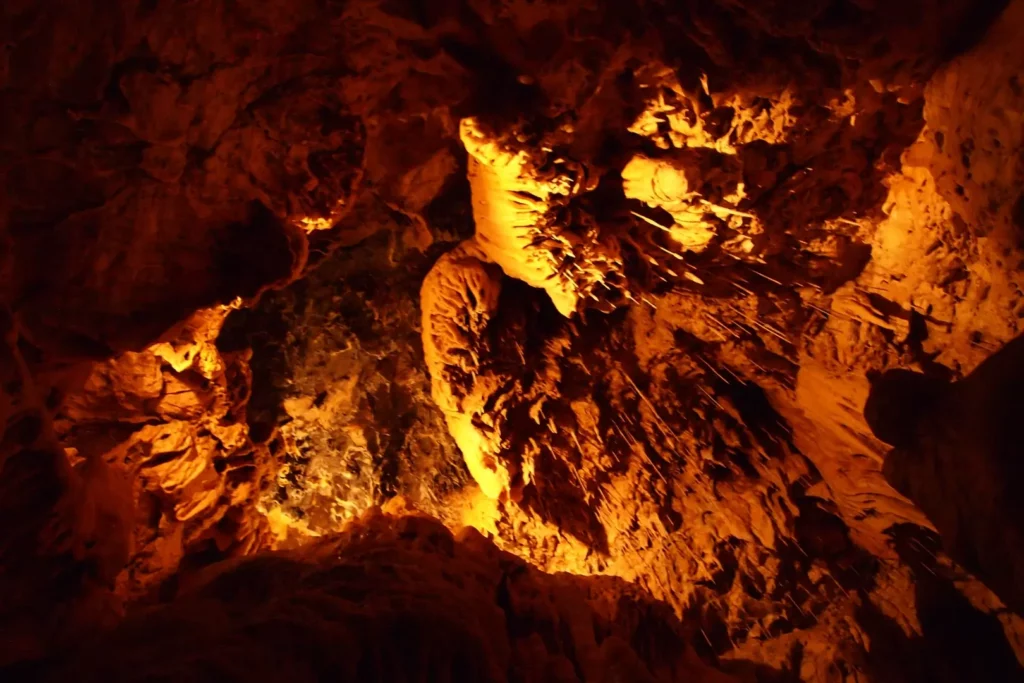
In this cave, the surface of the stones was often unusual – rough and like moss.
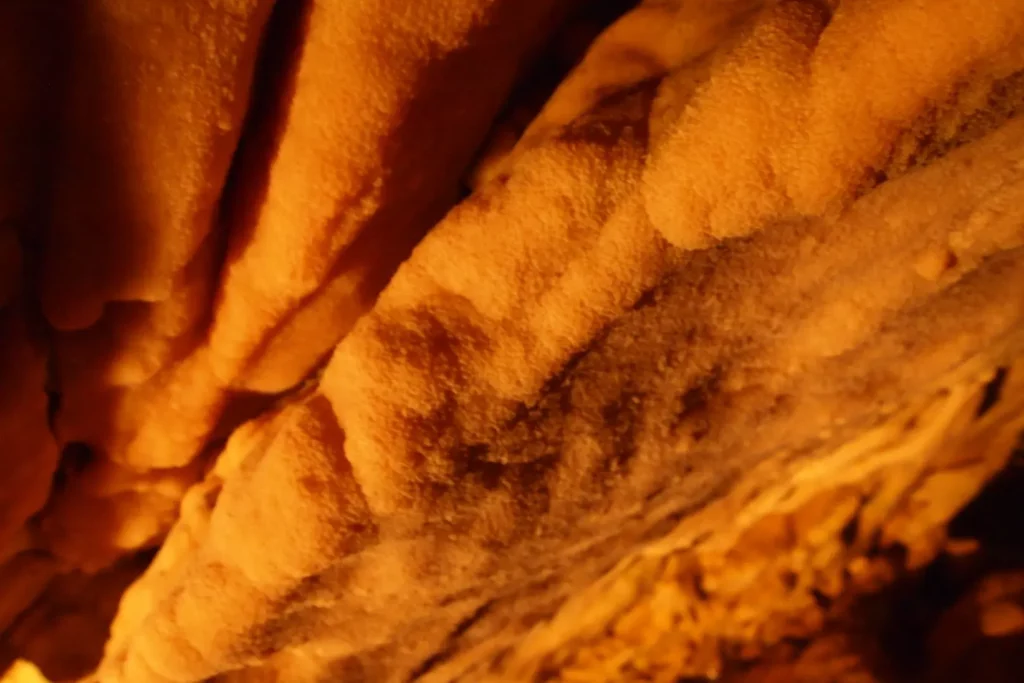
or “pimpled”.
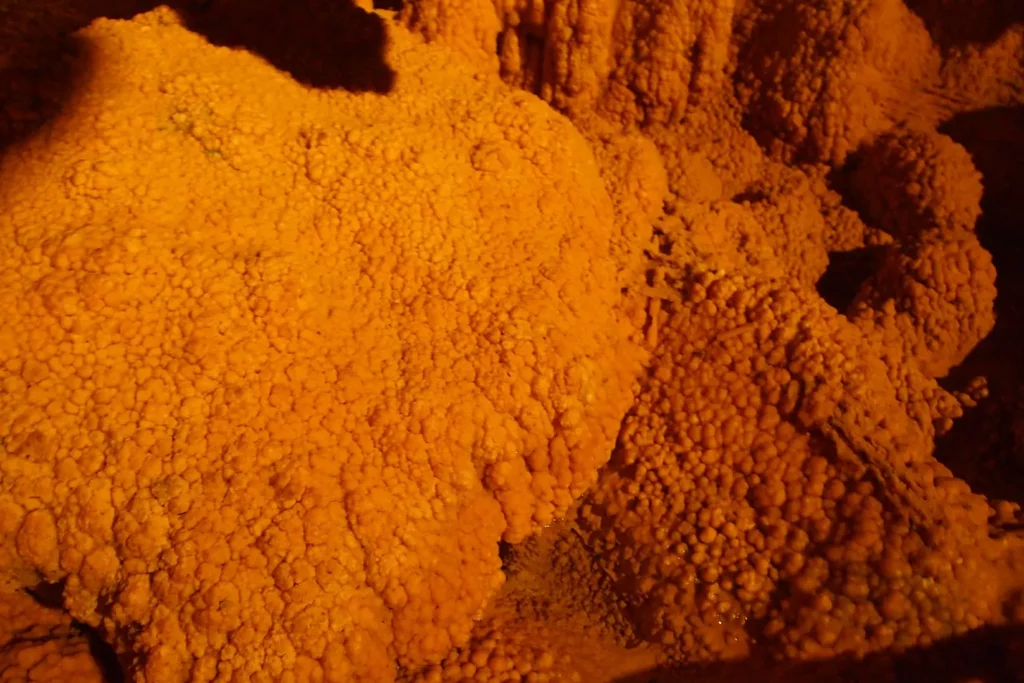
Quite a large round hall

We go down steeply.



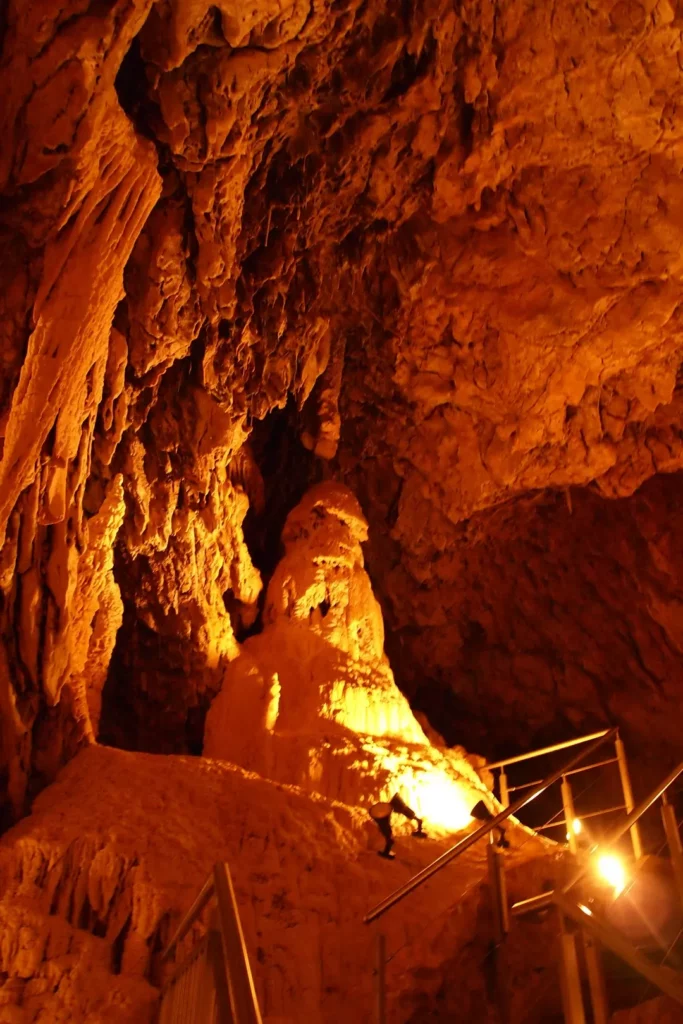
The longest thread hung on the descent, but my camera almost does not take it (in the center).
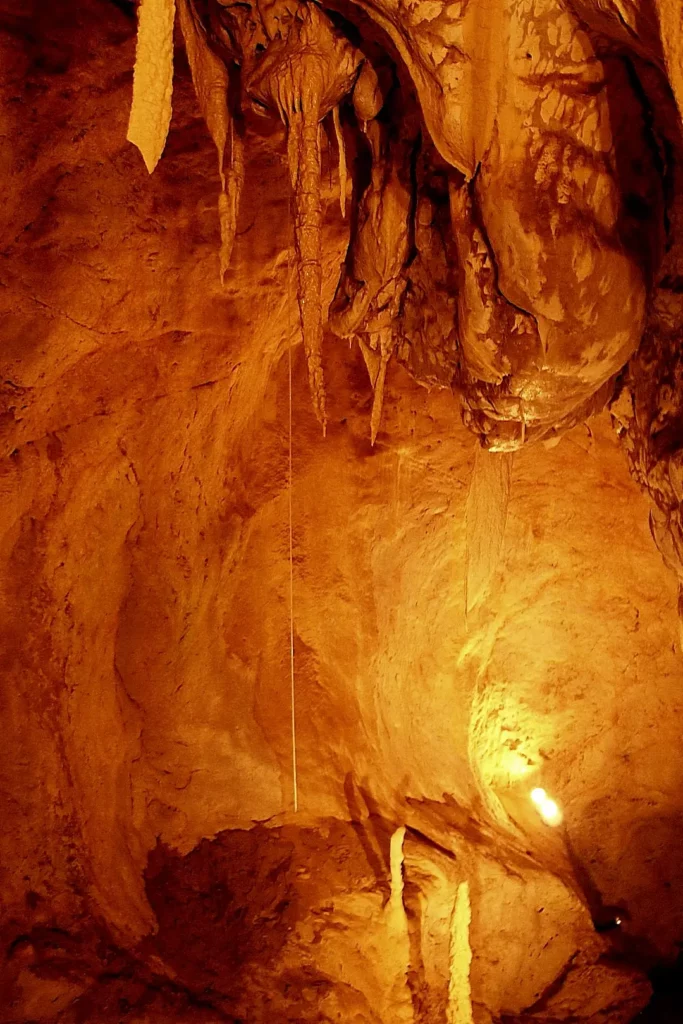
The stormy river Orb roars below – the one that flows out of the cave and along which we climbed. Fog rises on the river.
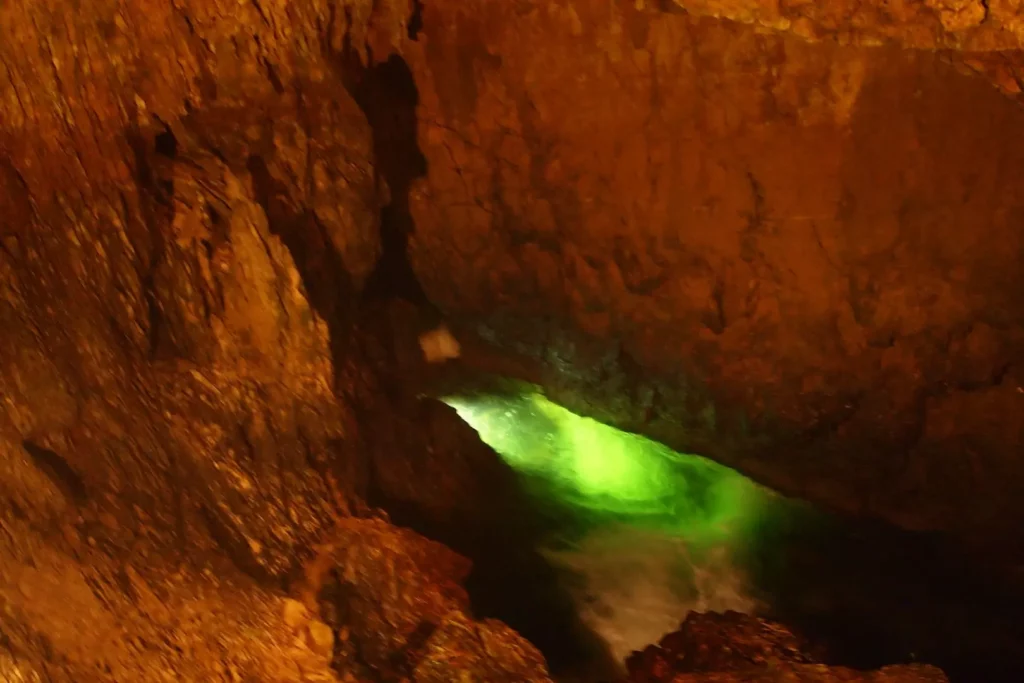
From the river we begin the steepest and longest ascent up the stairs. This wide cleft is difficult to photograph. In the first photo, in the upper right corner, you can see a black spot – there is an even larger hall, which is illuminated to music. The walls of the cleft are painted red – probably, iron rocks come out.
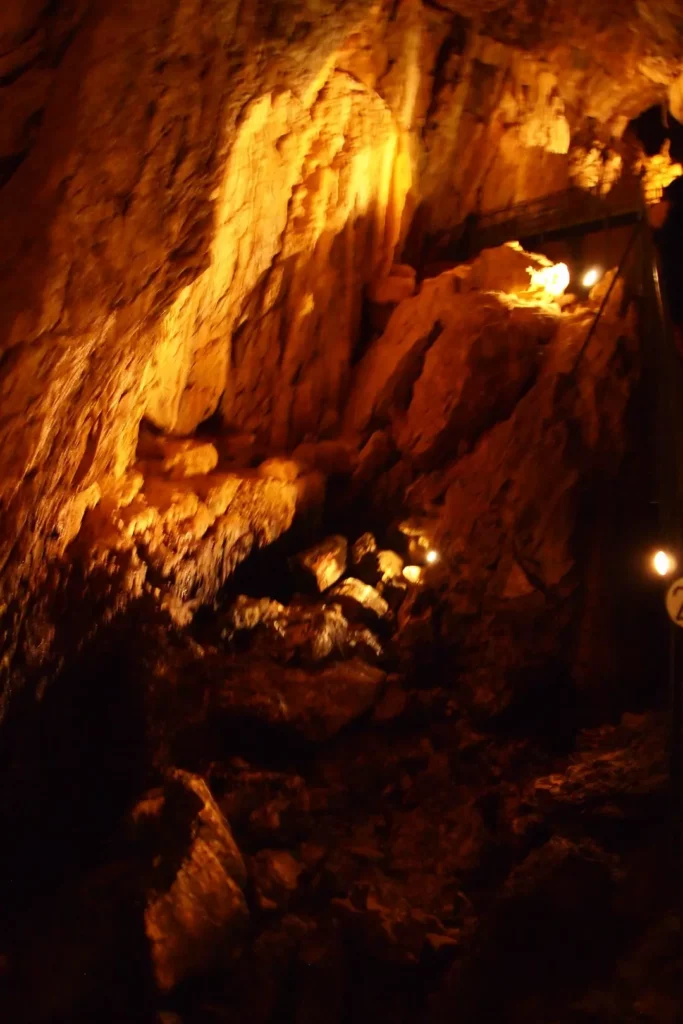

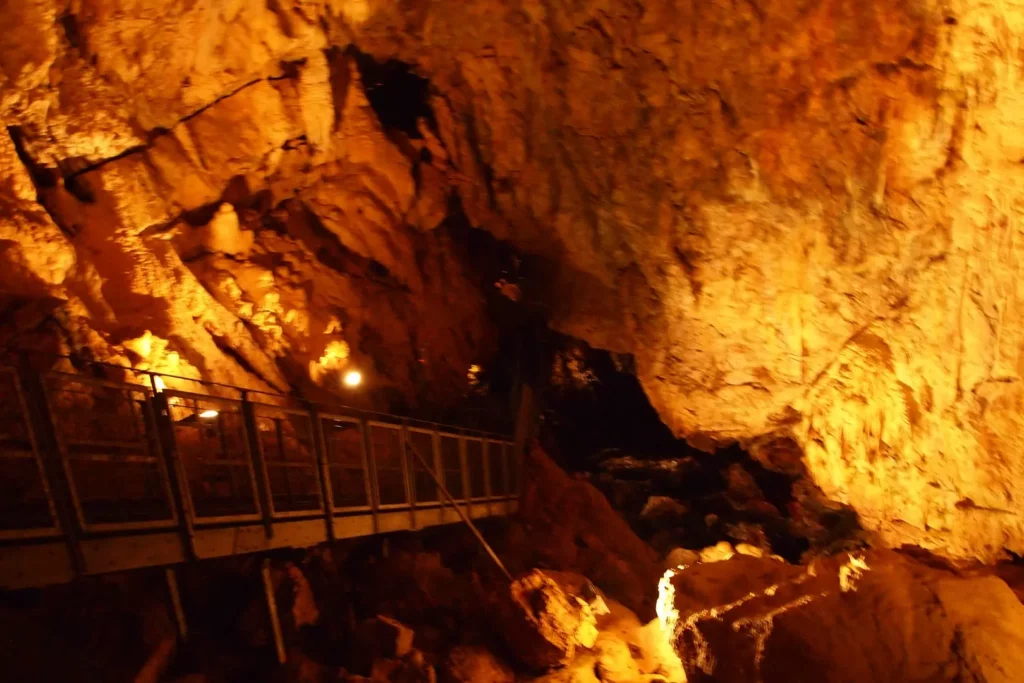
We come closer to the hall. It is still in the dark – the audience has not yet arrived.
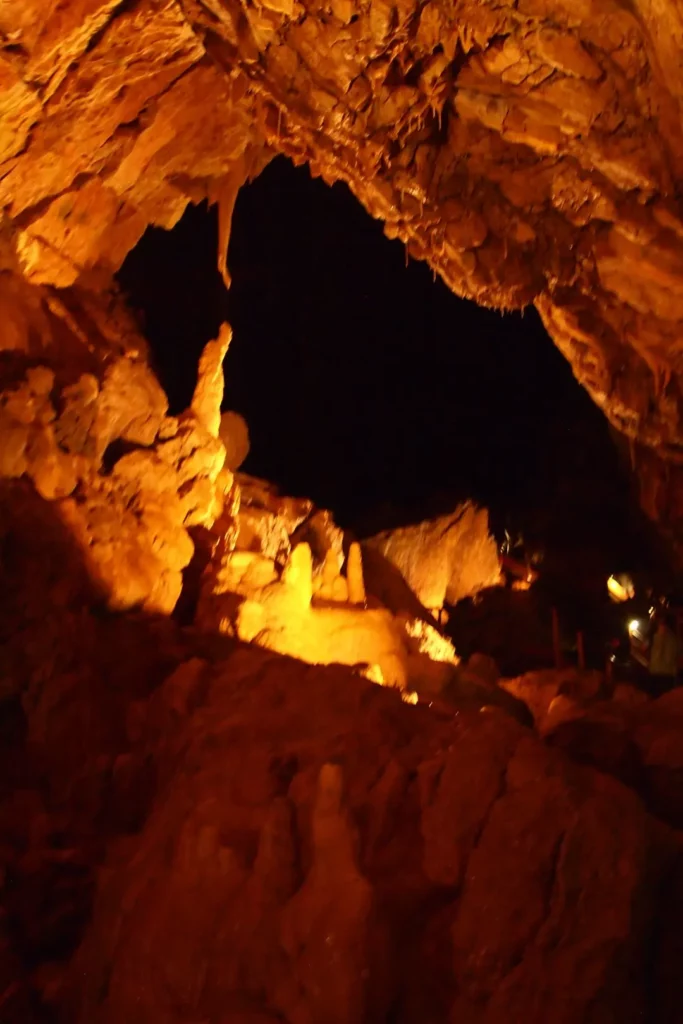
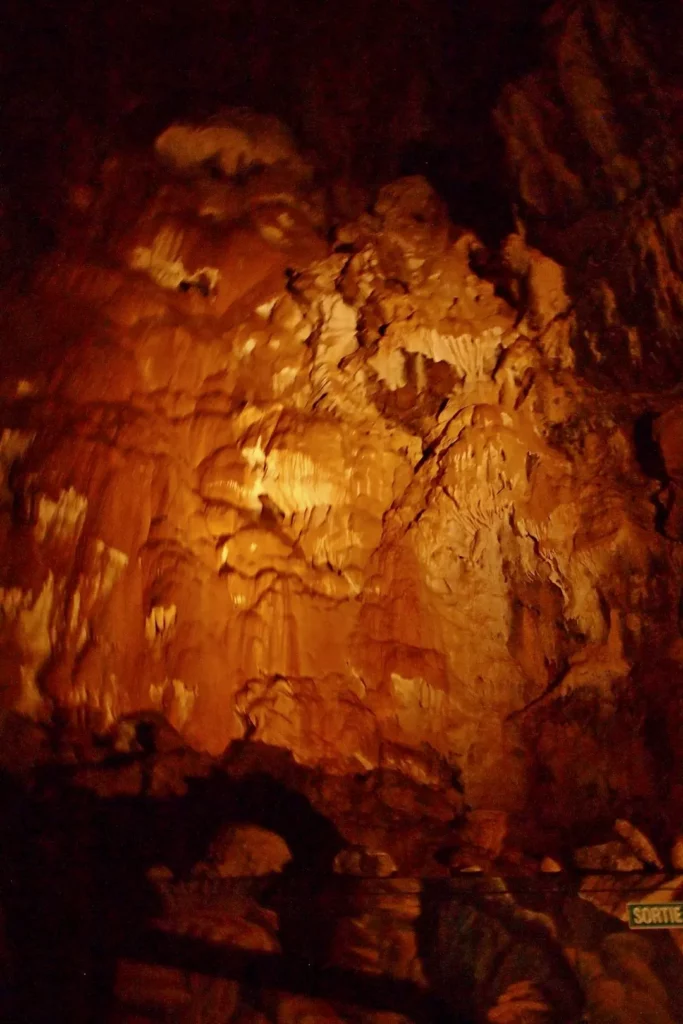
Press the button: music sounds, and the stalactites and walls are illuminatet in turn. You can imagine the size of the hall from the red human figure in this photo.


If you want to shoot the whole hall in lighting, you need to move back to some good point towards the end: first, the light goes out completely, then the hall is fully illuminated.
Now let’s go down. Do you feel how high? we look at the black hole at the bottom left.
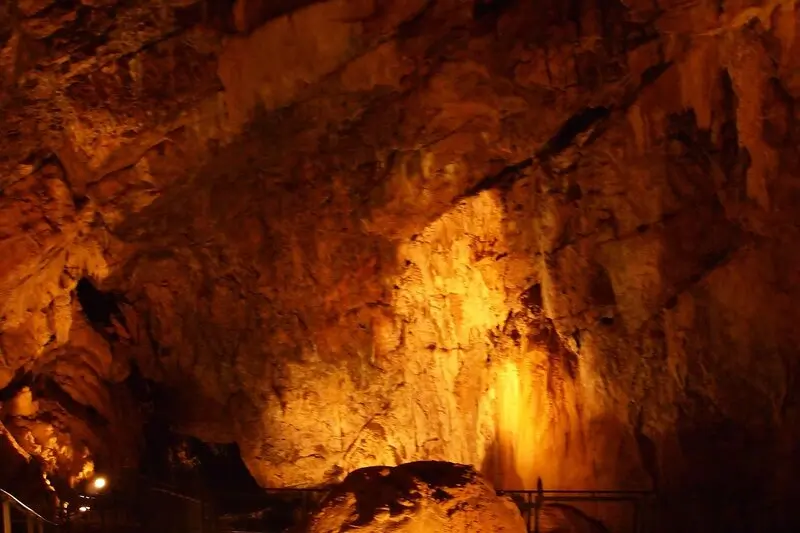
Going back down to the bridge over the river, we finish the route through the cave. But that is not all. An exhibition of minerals awaits us.
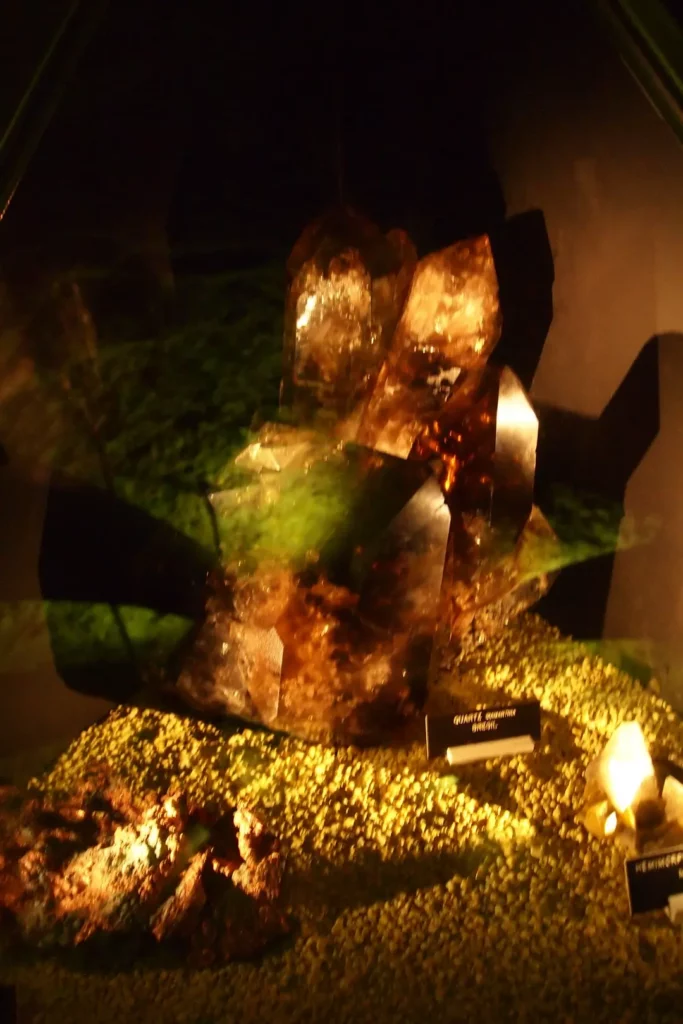



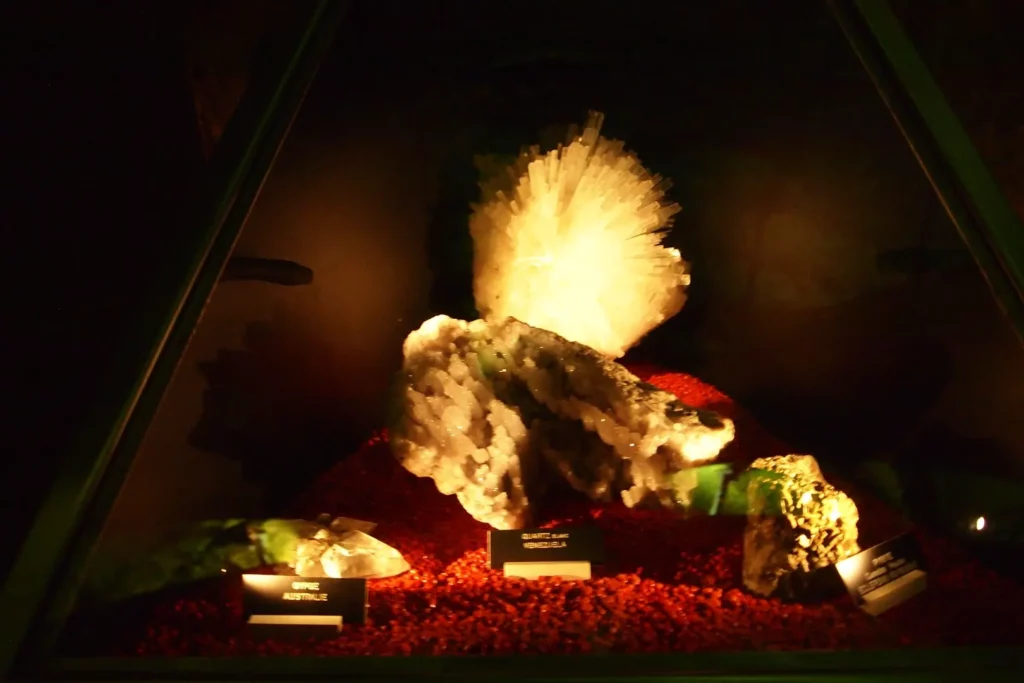


Jurapark
Relatively not far from the caves (about 1.5 km, but with a very decent climb you actually have to climb the surrounding mountains) there is a zoo Juraparc. By car, you will need to return to the main road from the caves and drive up the winding road for about five minutes.
The zoo looks young despite having existed since 1972. There aren’t enough animals: bears, wolves, bison and ungulates. If it hadn’t been for the bear-boys, there would be no point in climbing here by car. Some marmots or birds are clearly needed here.
The animals are observed from a wooden walkway.
Bison will end up in the restaurant (which is located here).
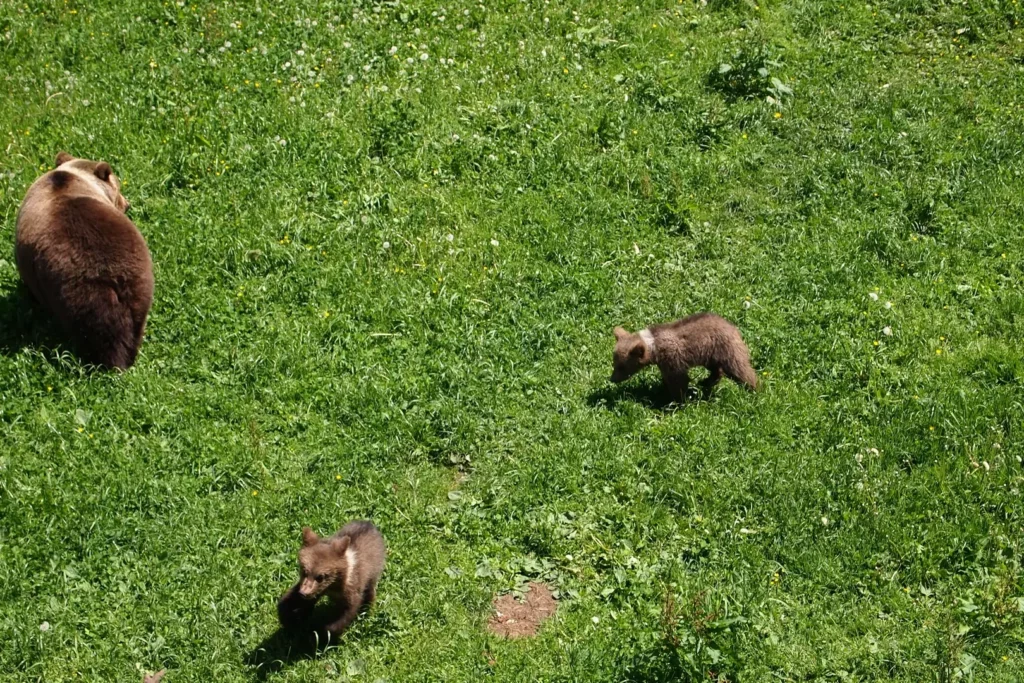
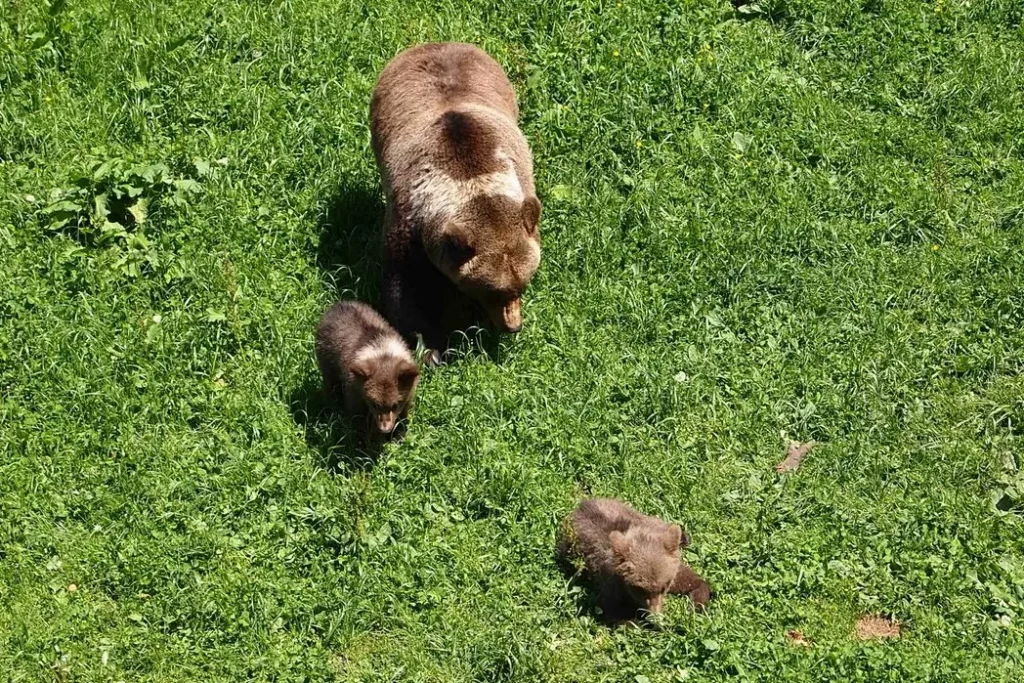
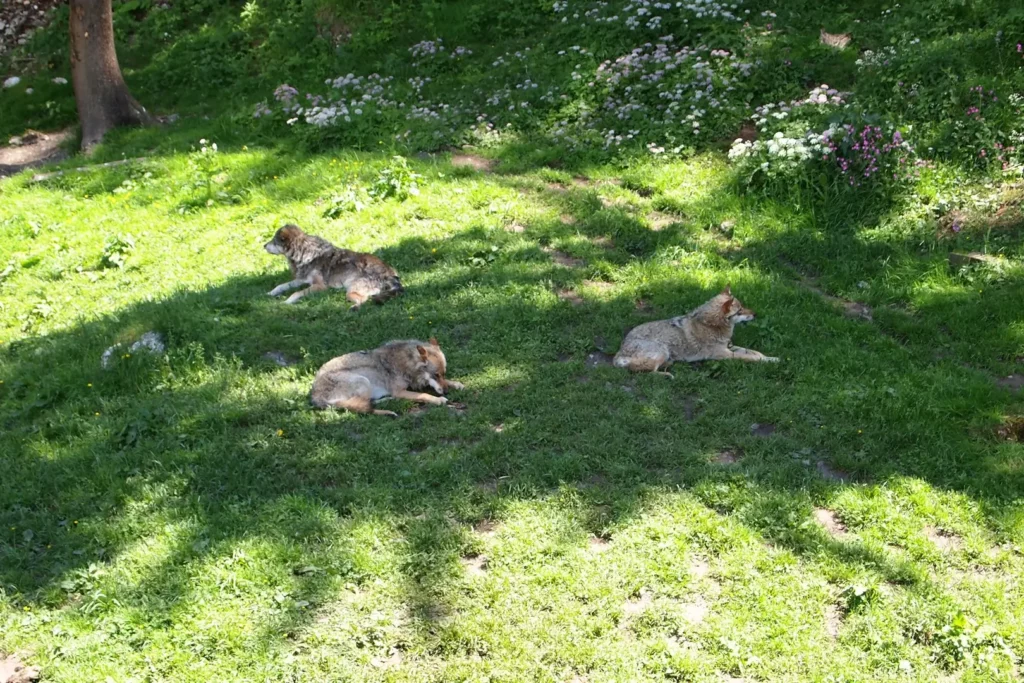

Vallorbe
The road from Vallorbe to the zoo leads further to Lake Joux. But we chose to return to Vallorbe in the hope of lunch (hope did not materialize – and who invite this midday break in restaurants!) and in order to visit the forge-museum – Museum of Iron and Railways (Musee du Fer et du Chemin de Fer).
The museum is small. It located in the center of Vallorbe next to the town hall. The smithy began to work already in 1495. The museum consists of three parts:
- smithy, where you can see the work of a blacksmith and receive a newly made nail as a gift,
- water mill
- and a department dedicated to the construction of a railway through the Simplon Tunnel, with a working model of the railway.
Follow me
They also exhibit archaeological finds, and upstairs you can run model trains.
This is the only picturesque place discovered in Vallorbe – the center of the city. There is a wheel – it’s a smithy.

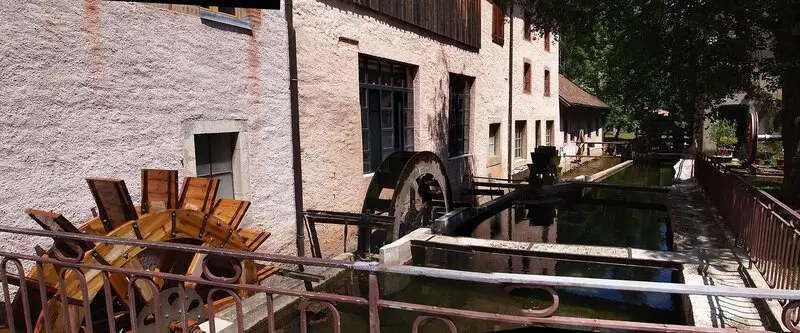
Other post about #Vaud and #Neuchatel Lake
Do you enjoy the site without cookies? This means that I work for you at my own expense.
Perhaps you would like to support my work here.
Or change your cookie settings here. I don’t use personalized ads


